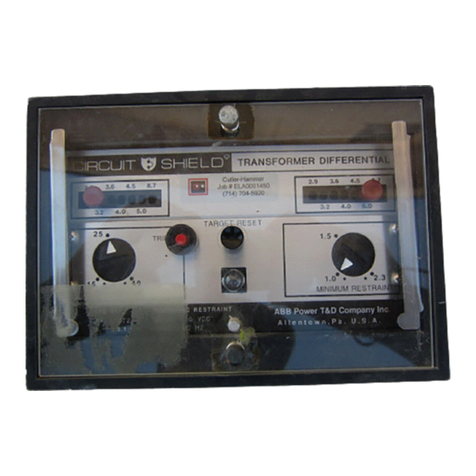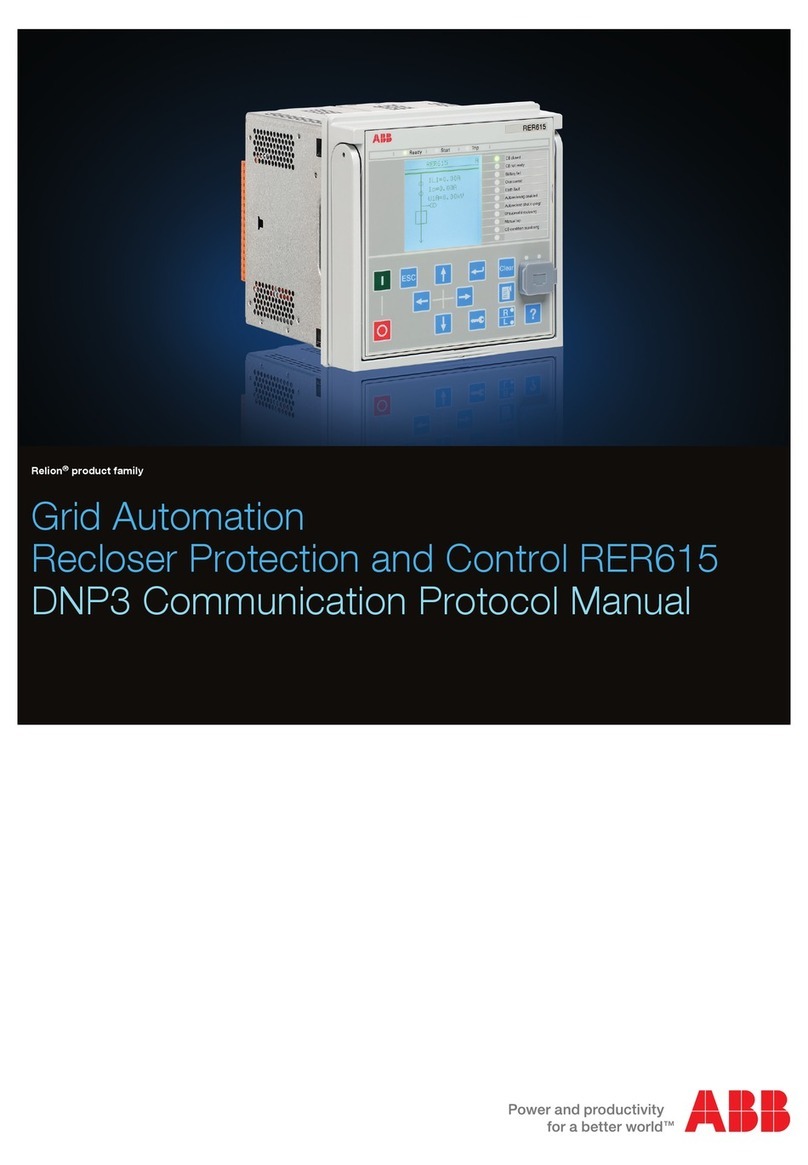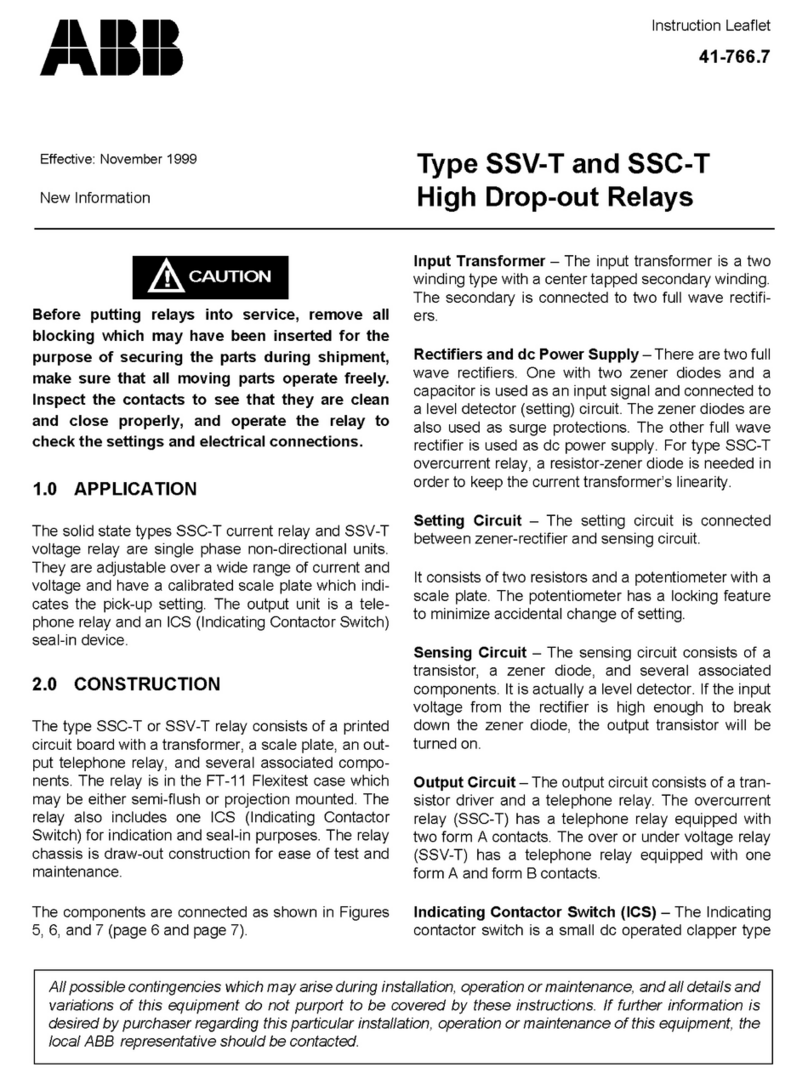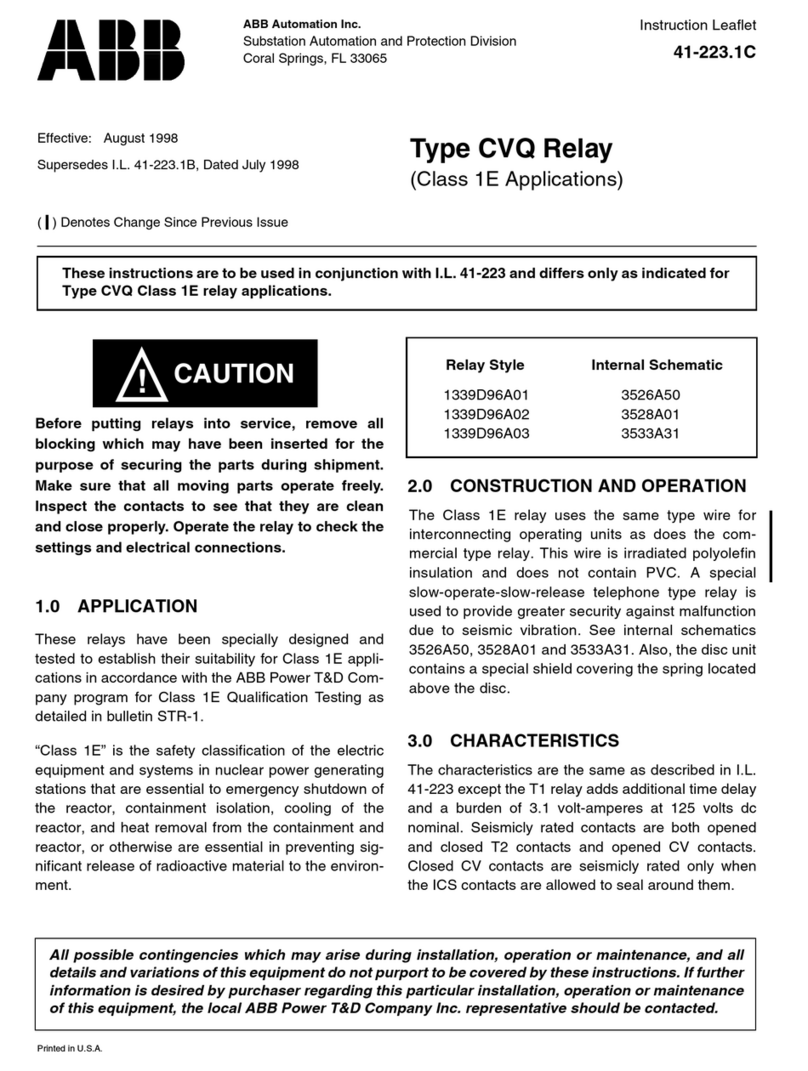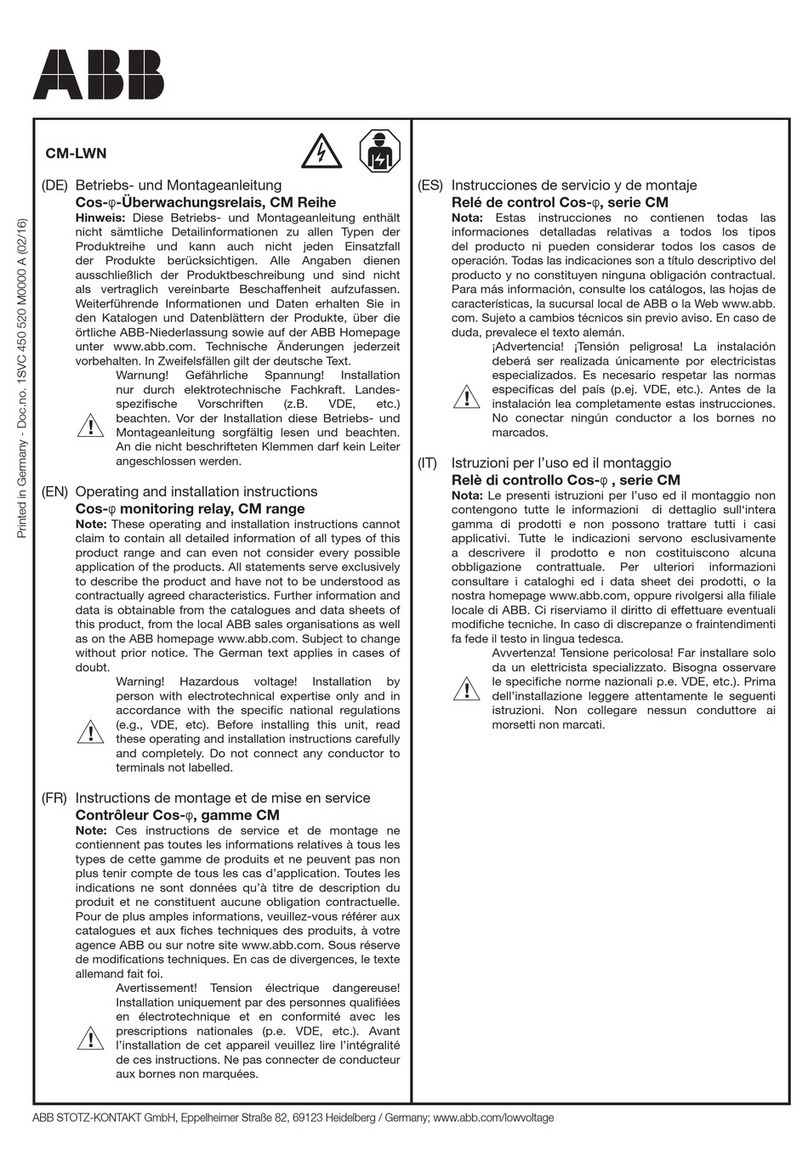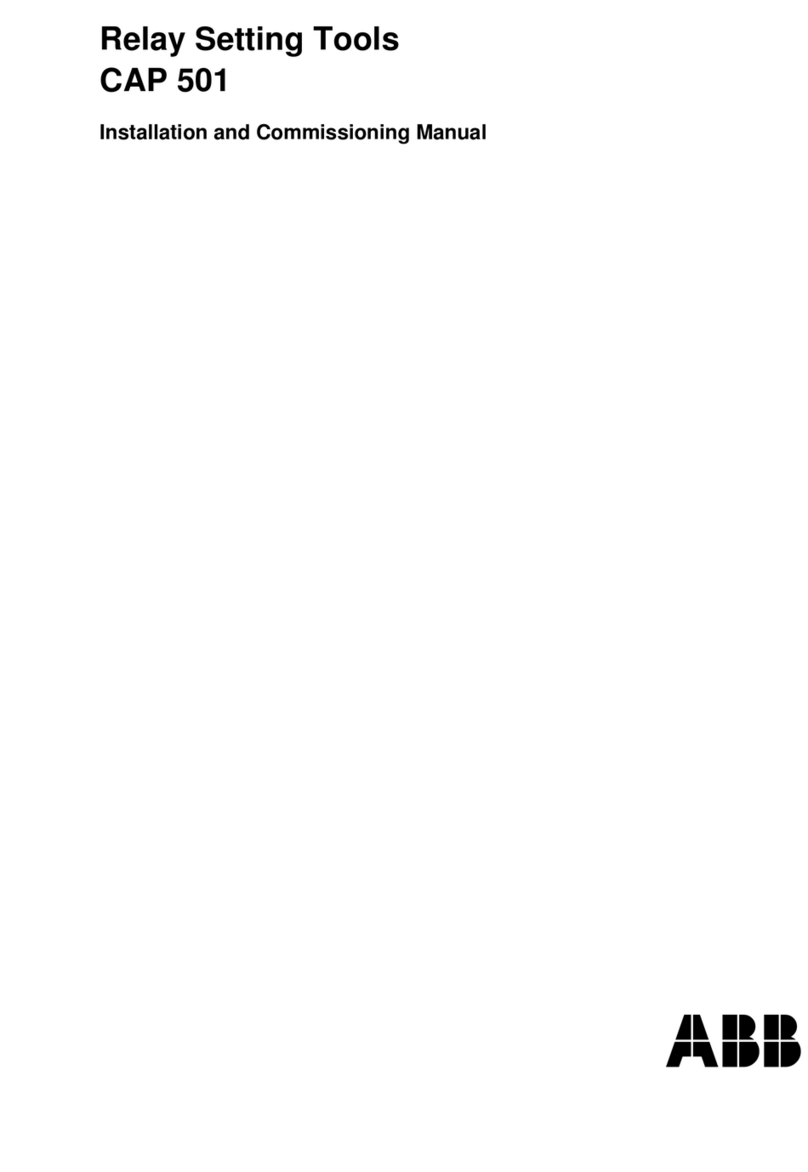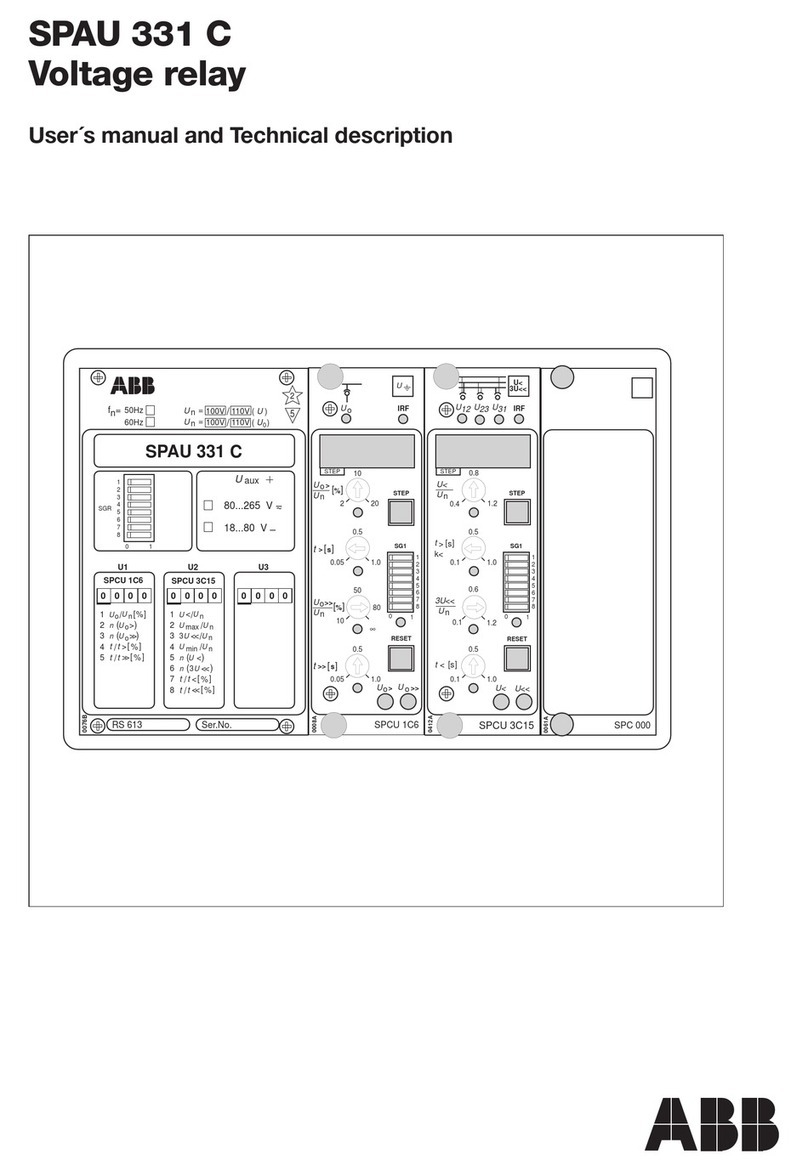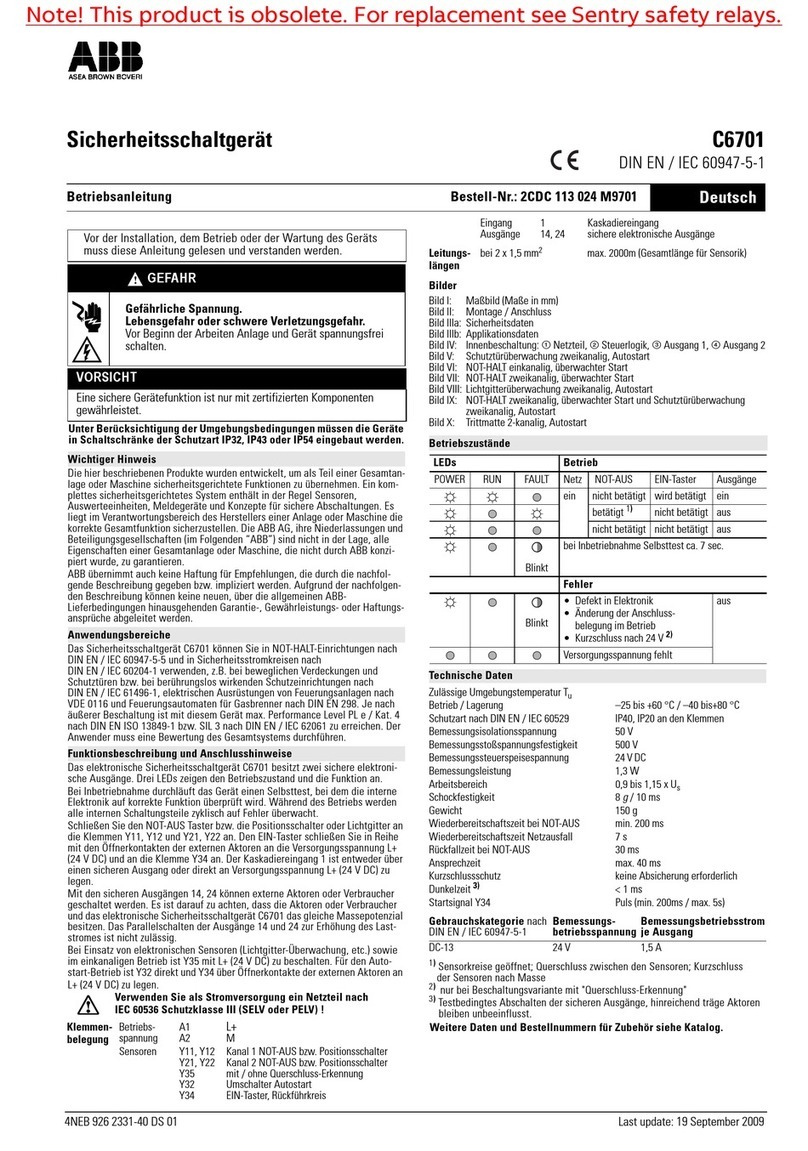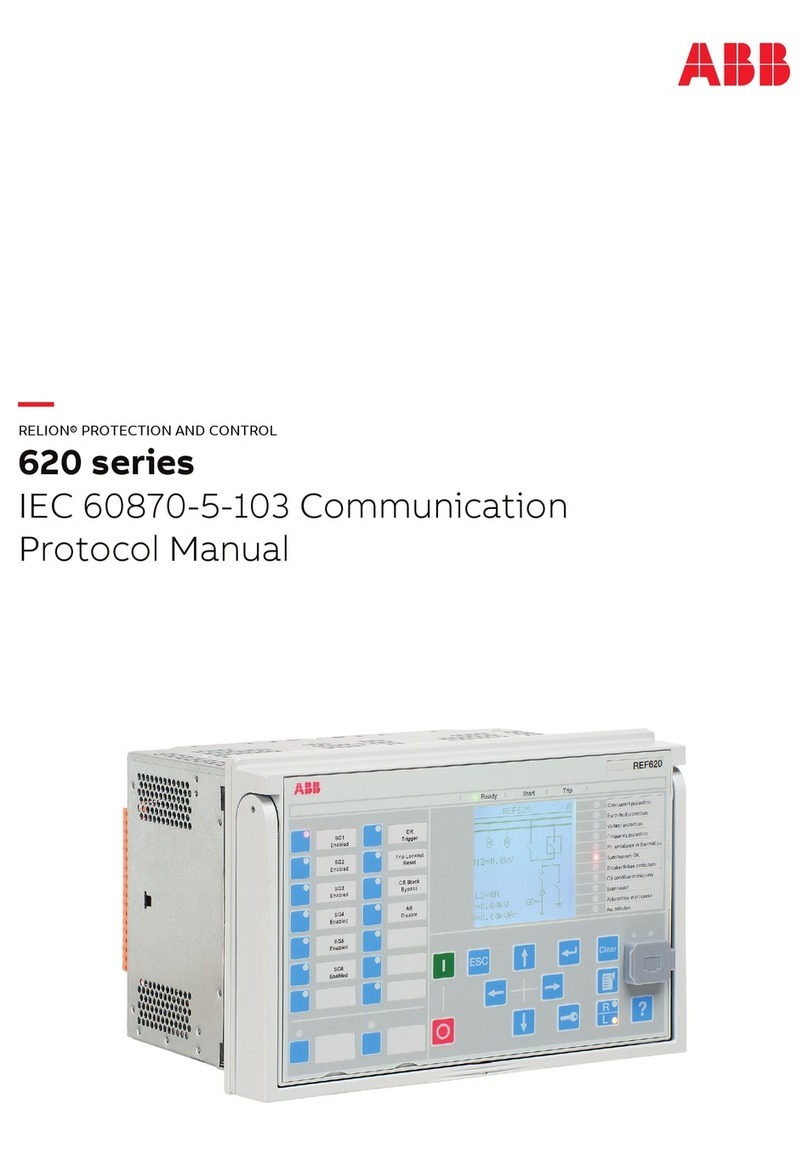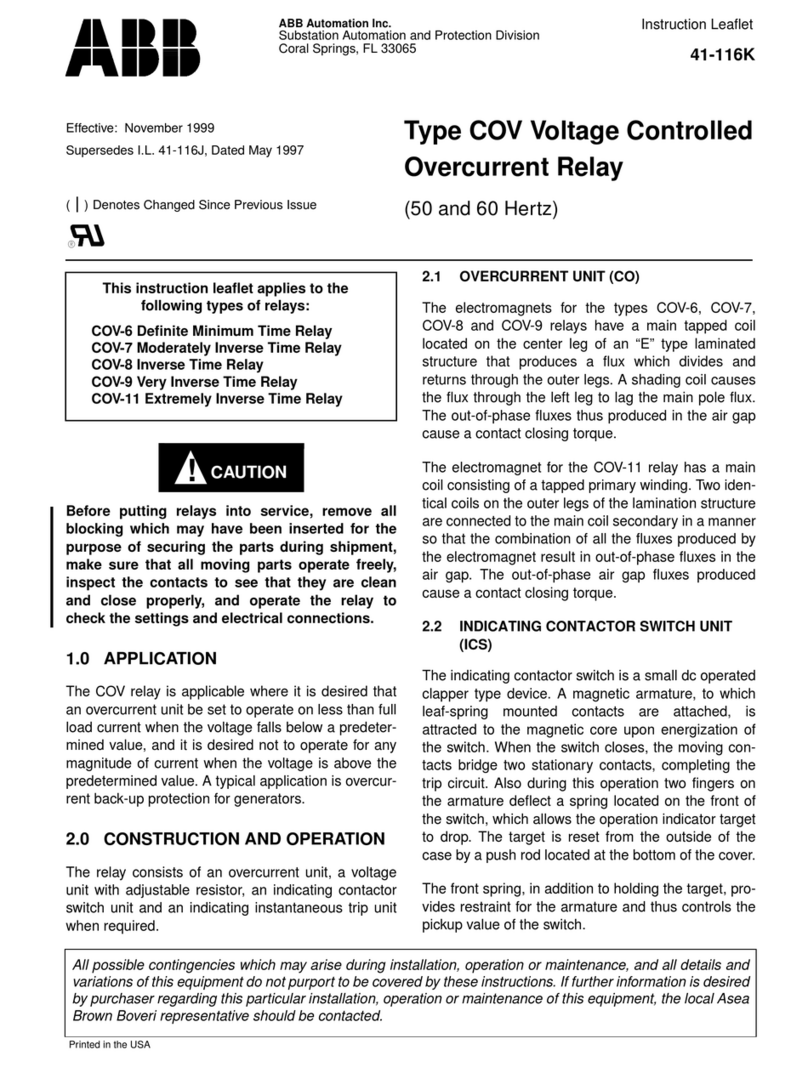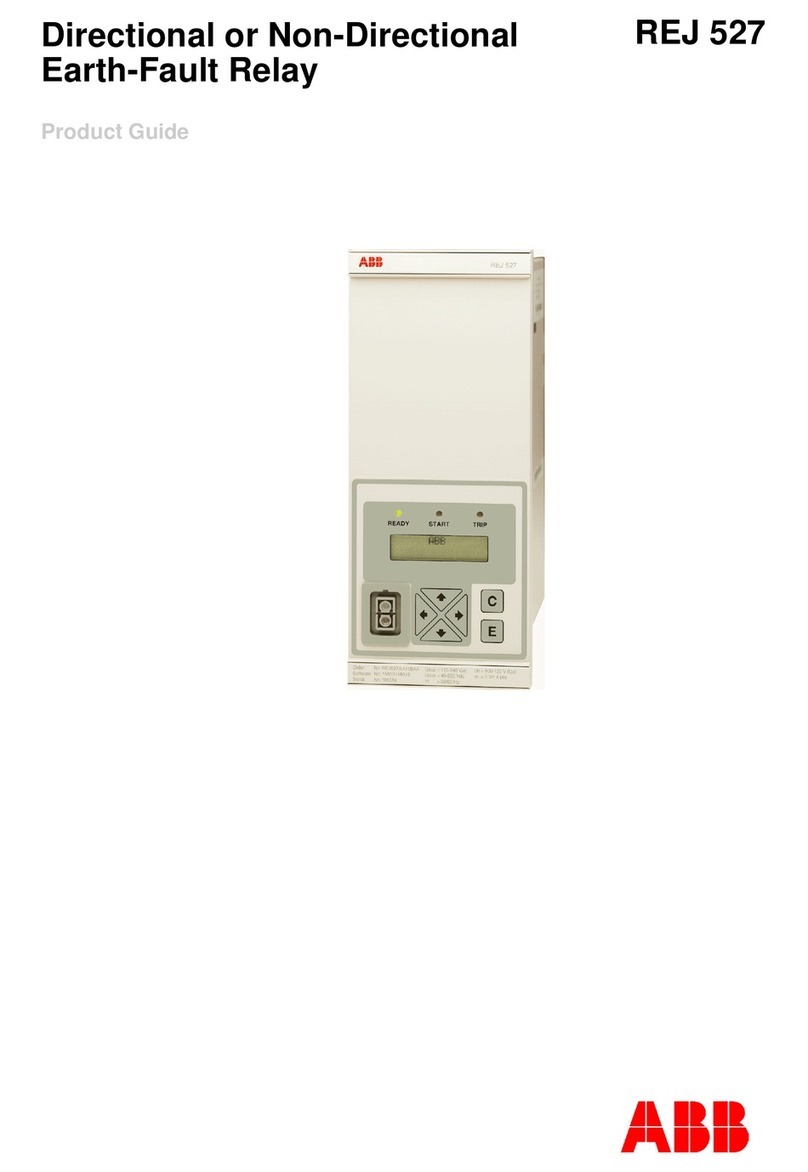
41-241.3L
4
Assume:
RC= ct ratio = 600:5 = 120
RV= vt ratio = 4200:120 = 35
P = power = 1000 primary kilowatts
(3Ø)desired trip level
Direct Solution:
T=
Indirect Solution:
IP=
IS= 138.8/120 = 1.157 A secondary
VS= 4160/35 = 118.86 volts line-to-line
T=I
SVS= 1.157 ( 118.86 )=137.5
Use Tap 150 ( closest to 137.5 ) on 100-600 watt relay.
P = 150/137.5 ( 1000 )=1091 kW actual
Time dial 2 will give 2 second operation at 2182 kilowatts.
( See Figure 5. )
P
RCRV3
----------------------- 1 000 000,,
120 35()3
--------------------------- 137.5==
P
3VLL
------------------ 1 000 000,,
34160
---------------------------138.8 A primary==
This allows the motor to be accelerated, and the field
breaker closed before the CW is operative.
Note that the use of field breaker 41a switch control,
prevents loss of field detection on accidental field
breaker opening. Other provisions must be incorpo-
rated to trip the controller when 41a is used and the
field breaker opens following field application. If 41a
is not used directly, it may drive a timer that closes
the coil circuit when 41 closes and has time delay
release when 41 opens.
This same relay will detect loss of synchronism in the
first slip cycle provided the slip frequency is suffi-
ciently low that the CW current stays in the “operate”
area long enough to produce operation.
5.3 ICS Setting
The ICS (indicating contactor switch) has two taps.
The 2.0 ampere tap is used when direct tripping is
used. The 0.2 ampere tap is used with the 125 or 250
volt dc type WL relay switch or equivalent. For the 48
volt dc type WL the 2.0 ampere tap is used.
CAUTION
!
Since the tap block screw carries operating cur-
rent, be sure that the screws are turned tight.
In order to avoid opening current transformer cir-
cuits when changing taps under load, start with
RED handles FIRST and open all switch-
blades.Chassis operating shorting switches on
the case will short the secondary of the current
transformer. The taps may then be changed with
the relay either inside or outside of the case.
Then reclose all switchblades making sure the
RED handles are closed LAST.
degrees when the system current and line-to neutral
voltage are in phase (see Figure 7).
5.2 Motor Loss of Field Application
The usual setting of the CW relay for this application
(Figure 8) is 20 watts, time dial 2 on the 20-120 watt
relay. When, on loss of field, the motor power factor
goes approximately 30 degrees lagging (watts and
vars into the motor) and more, the contacts of the
CW close after the time delay established by the time
dial settings.
In this application, the CW would operate during
motor starting and a field breaker 41a switch may be
used to prevent this by controlling the voltage circuit.
ENERGY REQUIREMENTS
The 60 Hertz burdens of the type CW Relay Three-Phase Application are as follows:
Relay Range Potential Circuit Current Circuit
Current Relay Current
Watts Voltage Volt-Amperes lags by Current Tap Volt-Amperes lags by
20-120 120 17.96 60°5 A 20 16.2 78°
100-600 120 17.96 60°5 A 100 5.4 77°
35-200 208 18.8 59°5 A 35 16.2 78°
175-1000 208 18.8 59°5 A 175 5.4 77°
